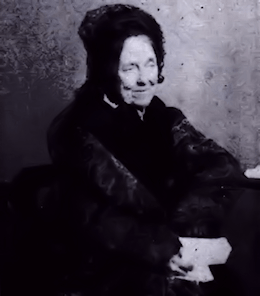Textus Receptus Bibles
Julia E. Smith Translation 1876
| 64:1 | To the overseer; chanting to David. Hear, O God, my voice in my complaint: thou wilt guard my life from the fear of the enemy. |
| 64:2 | Thou wilt cover me from the consultation of evil ones; from the crowd of the workers of vanity: |
| 64:3 | Who sharpened as a sword their tongue, they bent their arrows a bitter word: |
| 64:4 | To shoot down the blameless one in secret things: suddenly they will shoot, and they will not be afraid. |
| 64:5 | They will strengthen to themselves an evil word: they will recount to hide snares; they said, Who shall see them |
| 64:6 | They will search out iniquities; they completed a search searched out: and a man drew near, and a deep heart. |
| 64:7 | God shall be exalted; their blows were the arrow of the simple. |
| 64:8 | And they will cause their tongue to falter upon themselves: all looking upon them shall be moved. |
| 64:9 | And all men shall fear, and they shall announce the work of God: and they shall look at his doing. |
| 64:10 | The just one shall rejoice in Jehovah, and he put his trust in him; and all the upright of heart shall glory. |

Julia E. Smith Translation 1876
The Julia Evelina Smith Parker Translation is considered the first complete translation of the Bible into English by a woman. The Bible was titled The Holy Bible: Containing the Old and New Testaments; Translated Literally from the Original Tongues, and was published in 1876.
Julia Smith, of Glastonbury, Connecticut had a working knowledge of Latin, Greek and Hebrew. Her father had been a Congregationalist minister before he became a lawyer. Having read the Bible in its original languages, she set about creating her own translation, which she completed in 1855, after a number of drafts. The work is a strictly literal rendering, always translating a Greek or Hebrew word with the same word wherever possible. Smith accomplished this work on her own in the span of eight years (1847 to 1855). She had sought out no help in the venture, even writing, "I do not see that anybody can know more about it than I do." Smith's insistence on complete literalness, plus an effort to translate each original word with the same English word, combined with an odd notion of Hebrew tenses (often translating the Hebrew imperfect tense with the English future) results in a translation that is mechanical and often nonsensical. However, such a translation if overly literal might be valuable to consult in checking the meaning of some individual verse. One notable feature of this translation was the prominent use of the Divine Name, Jehovah, throughout the Old Testament of this Bible version.
In 1876, at 84 years of age some 21 years after completing her work, she finally sought publication. The publication costs ($4,000) were personally funded by Julia and her sister Abby Smith. The 1,000 copies printed were offered for $2.50 each, but her household auction in 1884 sold about 50 remaining copies.
The translation fell into obscurity as it was for the most part too literal and lacked any flow. For example, Jer. 22:23 was given as follows: "Thou dwelling in Lebanon, building as nest in the cedars, how being compassionated in pangs coming to thee the pain as in her bringing forth." However, the translation was the only Contemporary English translation out of the original languages available to English readers until the publication of The British Revised Version in 1881-1894.(The New testament was published in 1881, the Old in 1884, and the Apocrypha in 1894.) This makes it an invaluable Bible for its period.